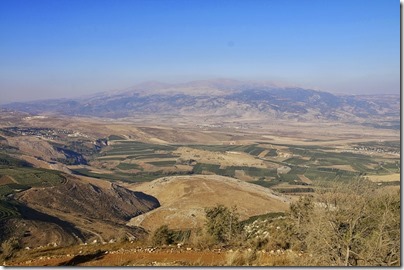The excavators of Abel Beth Maacah provide a summary of their first season of digging at the ASOR Blog. After an introduction, they explain what they are looking for.
For one thing, there is Abel’s Aramean connection. References to a political entity called “Aram Maacah” (1 Chronicles 19:6) and to the “king of Maacah” (2 Samuel 10:6, 8) evoke possibilities of Aramean presence at the site, allowing us to examine such an entity in relation to other presumed Aramean sites like Bethsaida, Tel Hadar, and En Gev. Even though the Arameans are specifically mentioned in ancient records, we know very little about them “on the ground,” especially within the borders of modern Israel. Can they be defined in terms of a distinct material culture? The location of Abel Beth Maacah on the northern borders of Israel (then and now) makes this site a viable candidate for the study of Aramean cultural and political influences.
Passages in the Hebrew Bible suggest that Abel Beth Maacah became an Israelite town during David’s reign, and it apparently remained so until its destruction by the Assyrian king Tiglath-pileser III in 733 BCE. In the story of the Wise Woman of Abel Beth Maacah (2 Samuel 20:14-22), the city is enigmatically referred to as “a mother in Israel.” Her power and influence is apparent in that she directly negotiates the surrender of the Benjaminite rebel Sheba ben Bichri with Joab, David’s military commander.
The Abel Beth Maacah project is also intent on pursuing Phoenician connections in Iron Age II. The city’s location on a branch road of the International Highway leading north to Ijon (Tell ed-Dibbin) in Lebanon’s Marj Ayyun Valley, and roads leading west to Tyre and Sidon, will enable us to study cross-cultural ties with coastal Lebanon during the Bronze Age and Iron Age.
The report continues with some suggestions as to why the site has never been excavated before along with a description of this season’s prize find. I’m hoping they find another copy of the Tel Dan Inscription. Intact, of course.
We’ve written about Abel Beth Maacah previously here and here.
Photo by A.D. Riddle.
